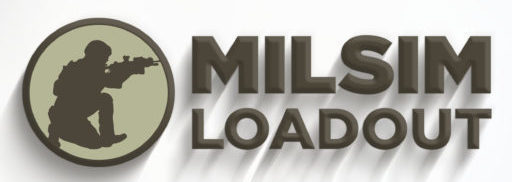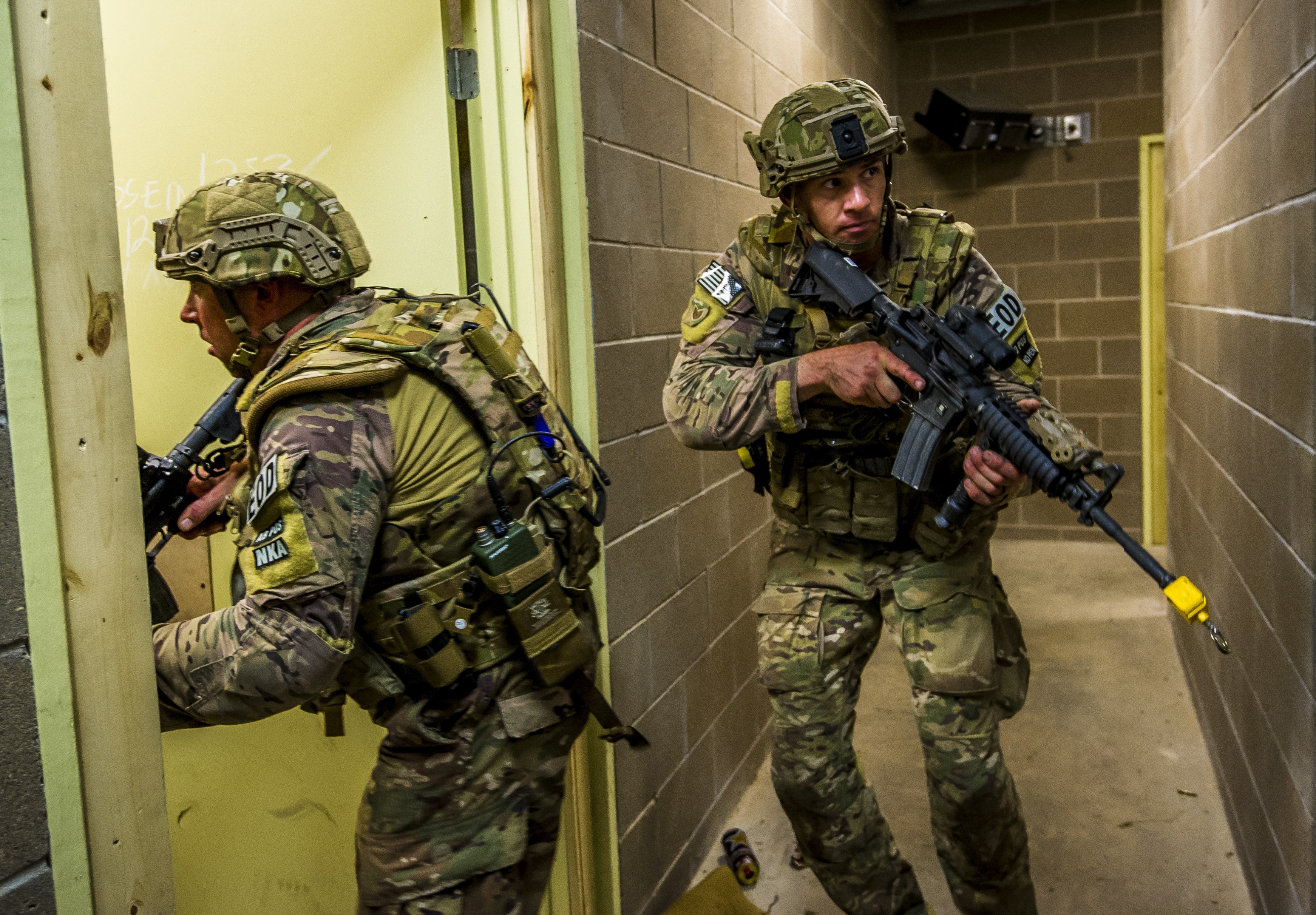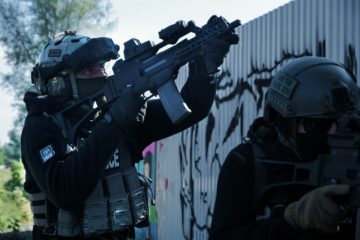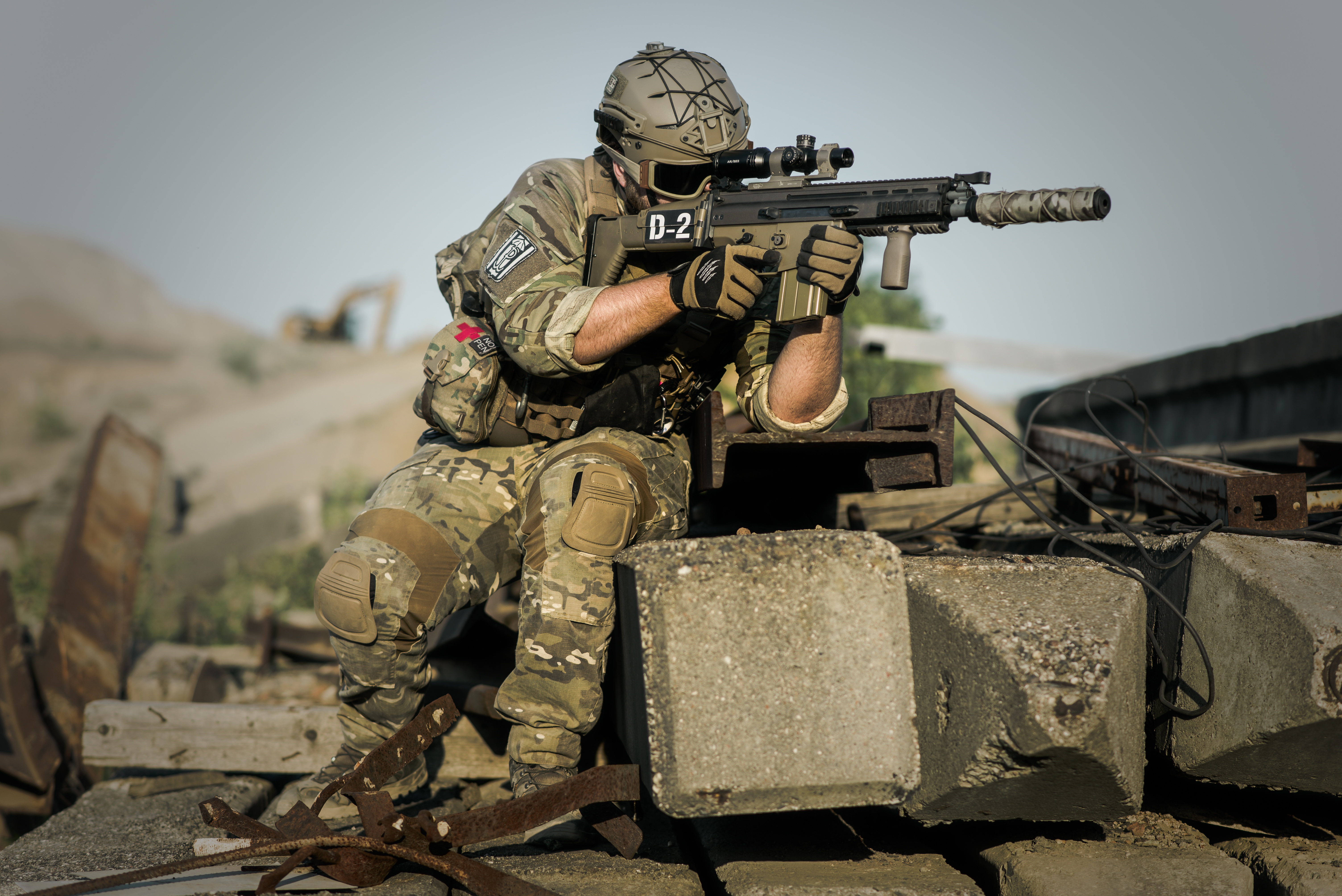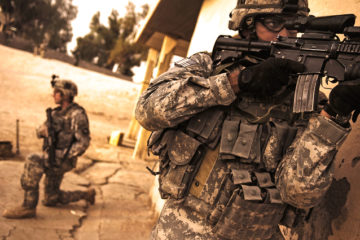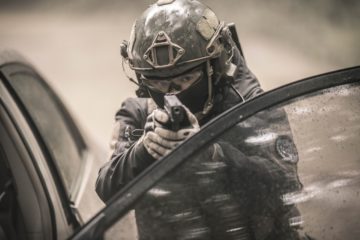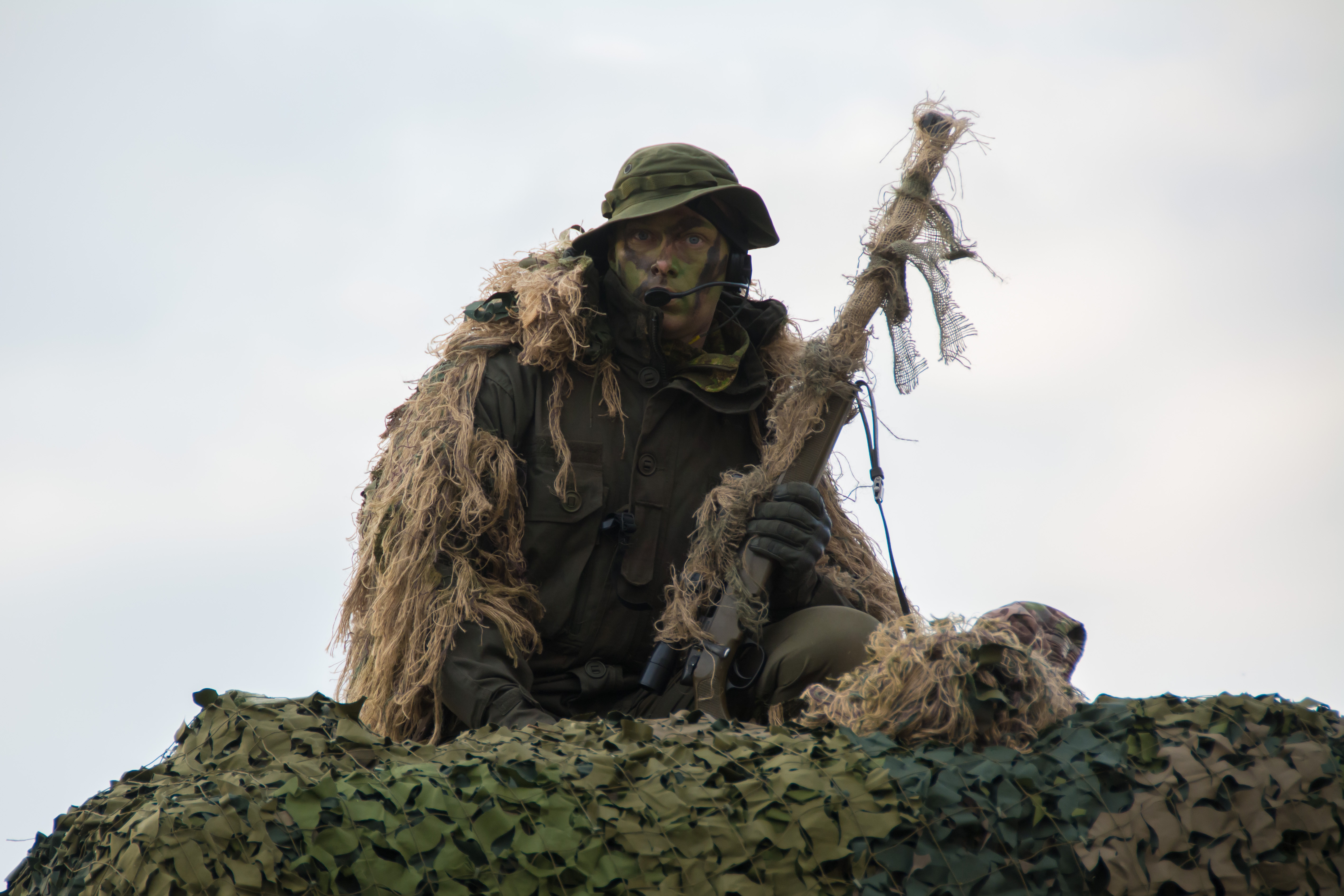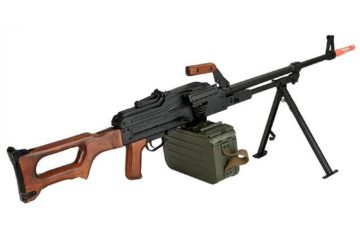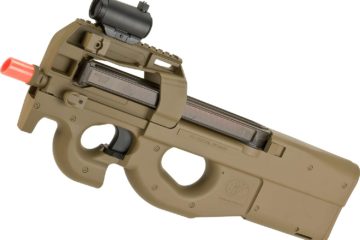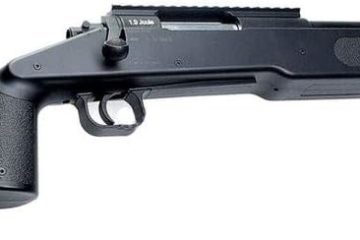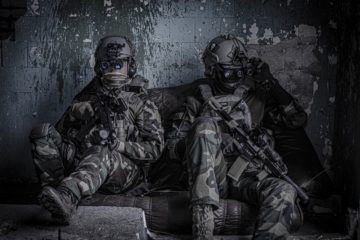We may earn money or products from the companies mentioned in this post.
Room clearing and CQB tactics are important skills that should be practiced before any MilSim event. This perishable skill set requires constant training and refresher.
Speed, Surprise, and Violence of Action:
Three guiding principles in room clearing are speed, surprise, and violence of action.
Speed:
Speed is defined as the ability to move quickly. When making entry into a room, do so in a calculated and determined manner. However, do not move faster than you can aim and shoot. As the saying goes, “slow is smooth, and smooth is fast.” Ideally, you should move throughout any CQB situation in a slow methodical fashion, but when making entry into a room suspected of having opponents, you must do so in a more dynamic manner. Moving quickly when making entry creates the next guiding principle of surprise.
Surprise:
Surprise is “an unexpected or astonishing event, fact, or thing.” You want your unexpected appearance in the room to be astonishing to anyone who is hiding inside. You want your opponent to react to you because a reaction is slower than action.
The combination of stealth and distraction create an overwhelming effect on your opponent. Consider using Mil-Sim flash bangs like the Airsoft Innovations XL Burst Impact Banger to create a distracting event before making entry. After tossing the bang, make entry almost immediately and take your corner of the room.
Violence of Action:
Violence of action is the “unrestricted use of speed, strength, surprise, and aggression to dominate an opponent.” The keyword in this principles definition is “unrestricted.” You must commit 100% to any action that you take. There is a story about an American Sniper in the Vietnam War, which illustrates this principle. The Sniper stumbled upon a group of multiple enemy combatants. He left his rifle behind, so he pulled out his M1911 and a .38 revolver and by his violence of action and overwhelming firepower, he was able to defeat several opponents, all of which were likely carrying AK-47’s.
Two is One and One is None
When making entry into a room, do not go in alone. Now, we are talking about MilSim, and BB to the chest is not going to kill you, but some of these players are formal military and they are about the business. Remember this when you go into a room alone and are blasted in the side of the face with BB’s. Because of the many angles that need to be covered and one individual is going to miss something. As the Navy SEALS saying goes, “two is one, and one is none.”
Got To Go In Alone?
If you have to go in alone, utilize the 45, 90, 45 technique and the concept of limited penetration. Imagine walking down a hallway, and you observe an open door to your left. Imagine a line that runs from the barrel of your weapon. Now, imagine that line converging on to the nearest doorpost of the open door. When that line hits a 45-degree angle, follow that angle to the doorpost, but do not make entry.
Observe the room, and let it breathe for a moment. Listen for equipment moving, heavy breathing etc. Now, pivot across the threshold until your weapon is at a 90-degree angle from the edge of the doorpost. Once again, observe the room, let it breathe. Now, you will continue to pivot another 45 degrees and observe the remainder of the room.
Limited Penetration:
To clear the rest of the room, you are going to have to make entry. Make entry by using limited penetration. Let us imagine that you have observed that the room is corner fed, and the door is at the far right of the room. To your left is an unobserved deep corner, and to your right is a wall.What you can do here is place your back against the doorpost and face that deep corner. Your feet should not break the threshold. Depending on your weapon system, you may be at the low ready, so that you will not bang it against the other doorpost on the next movement. You may want to switch to your sidearm, as it will make this easier. When you are ready, lean into threshold while simultaneously bringing your weapon up, and check that corner.
Now you should have covered the majority, if not all of the room. If you are satisfied that the room is clear, you may exit and continue. Remember that you will need to retake the hallway and you can do so by applying the 45, 90, 45 technique.
If you are not satisfied that the room is clear, check the remainder of the room. Do not overextend yourself, and make use of the wall to your right. Once again, remember that the area outside of the room is no longer secure so you will need to retake it.
Five Rules of Room Clearing:
When clearing rooms with at least one other individual, follow these 5 easy to remember rules; through the door, clear your near corner, run your wall, collapse your sector, and communicate.
Through The Door:
When you and your teammate have observed an un-cleared room, stack up on the wall next to the door. If possible, do not go across the threshold, unless the door is closed. Be careful not to telegraph your presence by needless talking or carelessly allowing the tip of your rifle across the doorway.
The second man on the stack will determine when to make entry by squeezing the lead man’s shoulder. When entering the room, remember this principle; the first man is NEVER wrong. If he goes right, you go left. If he goes left, you go right. It’s as simple as that. The number two man must enter immediately and cover his sector. When the first man makes entry, his side is exposed. Therefore, this tactic will only work if the second man makes entry immediately so do not let your partner down.
Clear Your Near Corner:
As you and your partner enter the room, it is of utmost importance that the entire room is covered by eye and weapon as quickly as possible. Upon entry, each individual must clear the nearest corner that he is facing. As stated in the previous section, the second individual must make entry immediately after the first, or this will not work. You have to cover your corner and in doing so, your partner’s back.
If you encounter a threat before viewing your near corner, handle it first. Do not get tunnel vision with that deep corner. If the corner is clear, you do not have to keep eyes and muzzle on it for too long because you still have an entire room to cover. Clear your corner, and then go on to the next rule.
Run Your Wall:
Upon clearing your corner, you must immediately turn your attention to the rest of the room. You will not stop moving and you will continue to move toward your near corner. This is called “running your wall.” Do not overextend yourself and do not change direction.
Although it’s called “running your wall,” you are not actually running. You are however moving with a methodical sense of urgency. Do not move faster than you can shoot. I cannot stress this enough. This rule will only work if you simultaneously achieve the next rule.
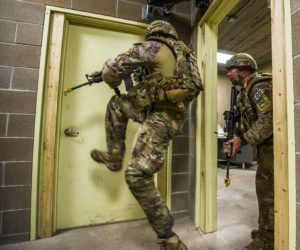 Collapse Your Sector:
Collapse Your Sector:
While running your wall, you are also scanning the entire room. Imagine that your partner’s field of view is a fan that radiates out from the muzzle of his weapon. What you are creating is a sector of fire that covers the entire room. Therefore, scan the room and stop before reaching your partner’s weapon, as you do not want to flag him.
You are effectively collapsing your sector into each other by covering the entire room with eyes and weapons. You are also creating overlapping sectors of fire. While you are scanning, look for danger areas like other open doors. If you have encountered a hostile or observed another danger area, you need to let your partner know.
Communicate
Whatever you do and whatever you see, you must let your partner know. Non-verbal communication, like pointing to a danger area or simple thumbs up will suffice. Alternatively, just simply talk to each other. Often times the bad guy already knows you are there, so there is no point in being quiet.
This is also a good opportunity to reload your weapons and plan your next move. As stated previously in this article, you have to retake the hallway, so work the exit just as you worked the entry.
Final Thoughts:
Room clearing and CQB tactics are a perishable skill so practice often. If you know you are going to a Mil-Sim event in a few weeks, get your teammates together and run some drills. Afterwards, talk about what you did well and improve on what you did badly. If you cannot get the entire team together, practice the MilSim CQB Tactics at your home. Practice the 45, 90, 45, technique, and limited penetration. Create scenarios in your mind and run them repeatedly. Visualization techniques create muscle memory so it is a great option to fill in the training gaps. Also, do not just take my advice, do your own research. As a wise operator once told me, “there is more than one way to skin a cat.”
The Ultimate Paintball Sniper Guide
